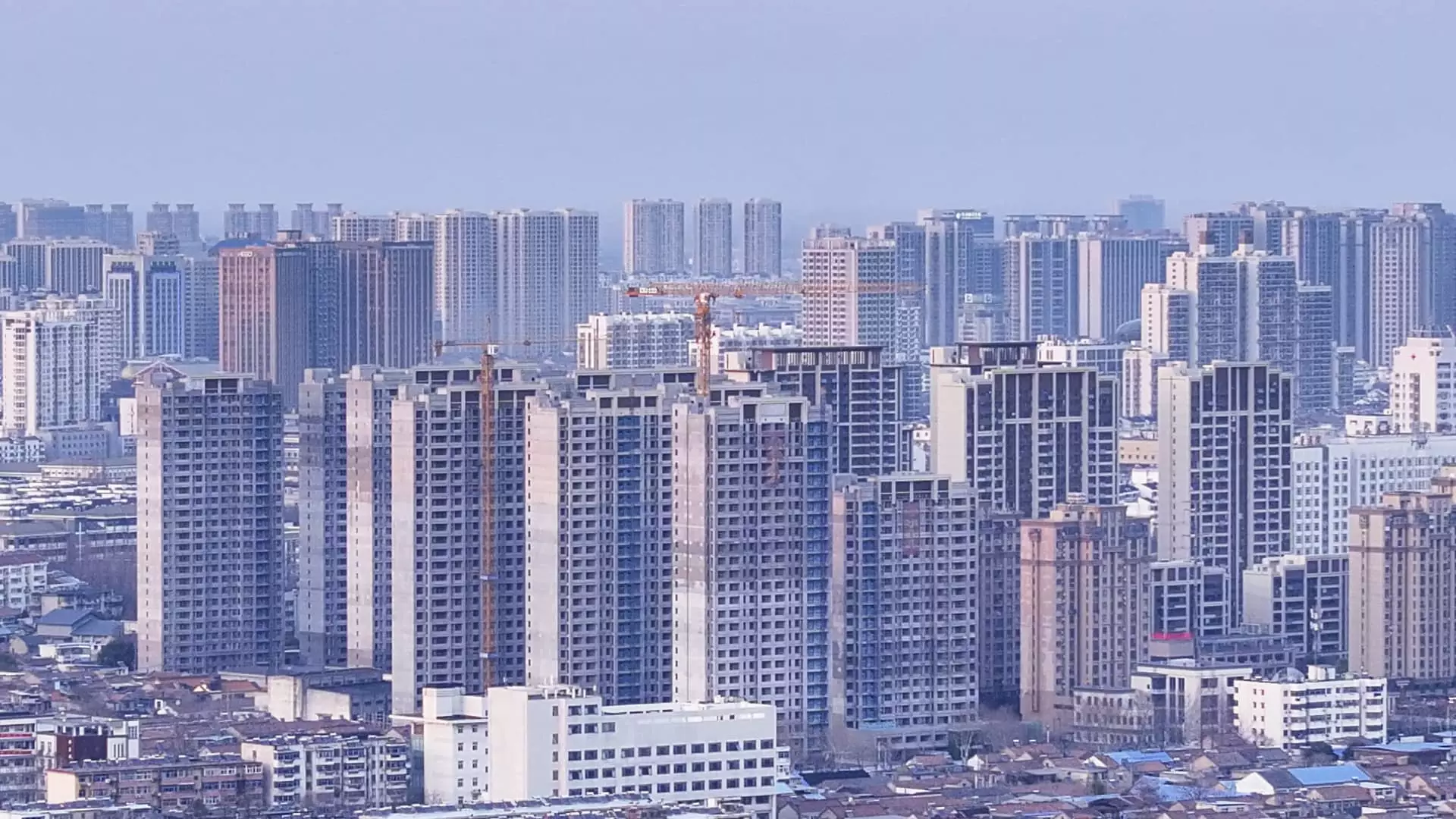For the past few years, China’s once-bustling real estate market has been a harbinger of economic anxiety. Amid the grandeur of skyscrapers and sprawling new developments, a grim truth has emerged: the dream of upward mobility through property ownership has become increasingly elusive for millions. Reports from institutions like UBS hint at a possible stabilization, yet the optimism feels painfully premature, bolstered by fleeting indicators rather than substantial recovery. Just this week, CEO John Lam of UBS noted that while certain major cities might show signs of life, the reality is that these improvements are hardly reflective of a nationwide revival—a classic case of the rich getting richer while the poor remain stagnant.
While analysts optimistically predict that home prices may stabilize by early 2026, such predictions gloss over the grim reality that 2025 still looms large, filled with uncertainty and persistent market pressures. It’s essential to scrutinize the foundation of such forecasts; after all, hope is not a strategy. The significant downturn the market experienced—characterized by colossal debt defaults from famous developers like Evergrande—speaks volumes about the systemic issues that still plague the sector. Despite policymakers urging for a halt in this downward spiral, such measures seem more like band-aids than actual remedies, leaving a vast swath of consumers disillusioned and distrustful.
Shifting Metrics: The Illusion of Recovery
Among the myriad of alarming data points is the more than 30% increase in secondary home sales across five major cities, a stat frequently paraded as a beacon of hope. But let’s not delude ourselves: an increase in secondary home sales does not equate to a healthy market. This activity could merely indicate that potential homeowners are shifting their expectations downward, opting for existing homes as new constructions fall out of reach and credibility. Many buyers are compelled to navigate a perilous terrain, manipulating budgets and quality in a market defined by dwindling trust.
As UBS has identified low inventory and rising rental prices as factors leading to a potential end to the market’s plunge, we must wonder whose interests are being served in a market where rental yield increasingly outweighs homeownership. The focus on rising inventory of unsold homes is not a sign of robustness, but rather a painful reminder of the unsustainable growth model built on excessive borrowing and speculative investment. When metrics that should reassure us ignite skepticism instead, it signals an urgent need for reflection and re-evaluation of strategies for rejuvenating economic confidence.
Macro Policies vs. Market Realities
Even with renewed interest from foreign investors, such as Singaporean developers making plays for Shanghai land, we must interrogate the sustainability of this interest. Are we witnessing genuine foreign investment, or simply opportunistic maneuvering during a time of turmoil? The government’s recent moves towards affordable rental housing suggest a troubling shift towards a rental economy, poised to entrench the divide between property owners and renters further. Housing should not simply be a commodity; it is a fundamental human right. If the only viable trajectory is transitioning away from ownership, we risk creating an entire generation of citizens who are locked out of wealth-building opportunities.
Moreover, as governmental interventions aim to stimulate this broken ecosystem, the efficacy of these measures comes into question. An influx of capital doesn’t automatically translate into increased consumer confidence or long-term stability. The central bank’s financial support seems like a stopgap rather than a solution to the underlying issues. What happens when the influx ceases? Without real systemic change, we may find ourselves back at square one, reeling from another burst bubble while still struggling to comprehend the depths of our economic malaise.
Consumer Sentiment: The Heart of Recovery
At the core of this potential recovery lies an often-overlooked factor: consumer sentiment. Even if economic policies manage to stabilize assets, they hold no value if public confidence remains low. The fear that gripped homeowners and investors over the past few years cannot be extinguished overnight; the scars of previous market mismanagement will leave an indelible mark, leading consumers to question the viability of investing in real estate.
The call for extensive executions of policies signals a recognized need for transformative change. However, change requires trust, something that has understandably dwindled. It’s straightforward to implement financial measures but challenging to cultivate a renewed sense of optimism among consumers wary of repeating past mistakes. The fickle nature of confidence in the real estate market precedes any potential for recovery, meaning that policymakers must tread lightly as they design strategies aimed at revitalizing this critical sector.
As we navigate the labyrinthine complexities of China’s property market, the excess of hope must not drown out the necesity to confront uncomfortable truths. The path ahead is fraught with challenges, double-edged policies, and a population desperately seeking stability in a landscape that has made uncertainty its hallmark. Until lasting solutions are enacted promoting genuine growth, any sign of recovery could prove to be nothing more than an illusion.

